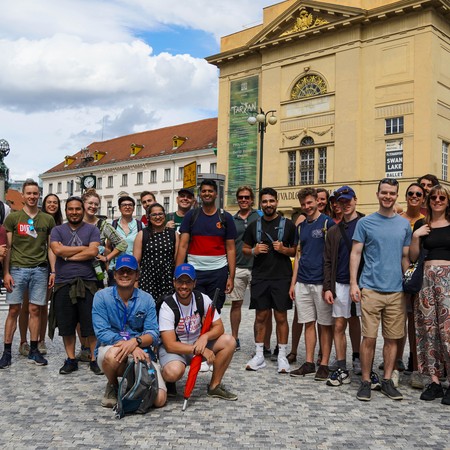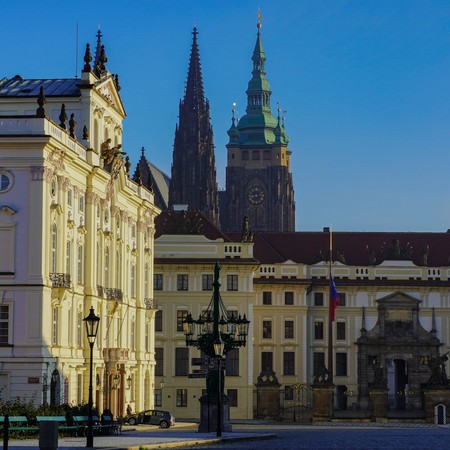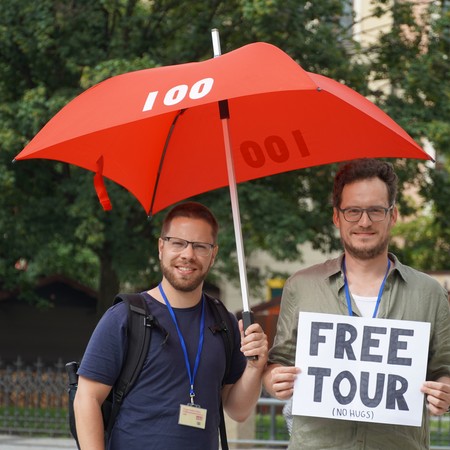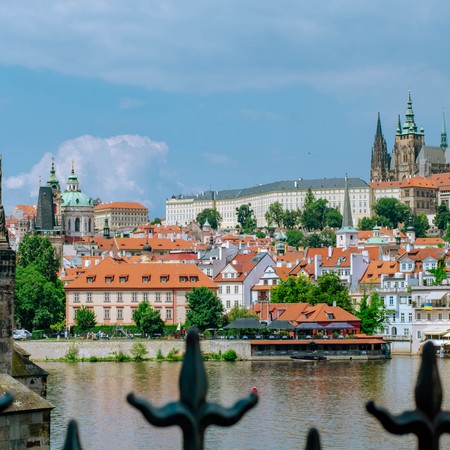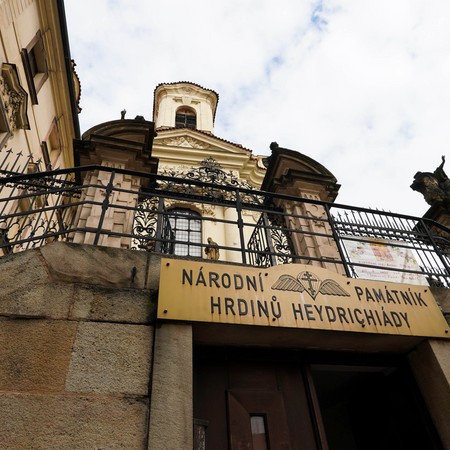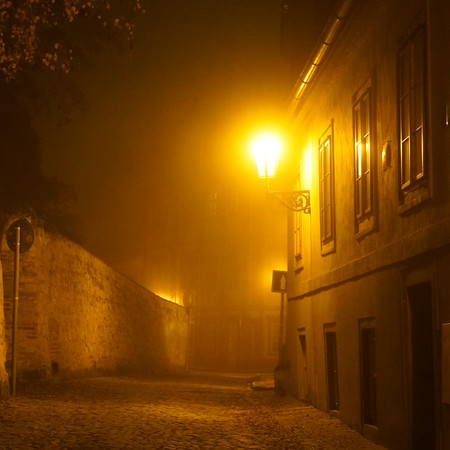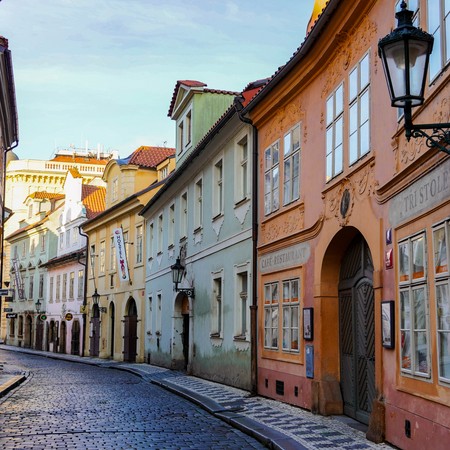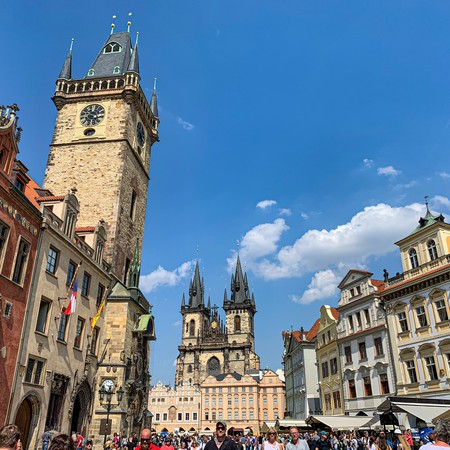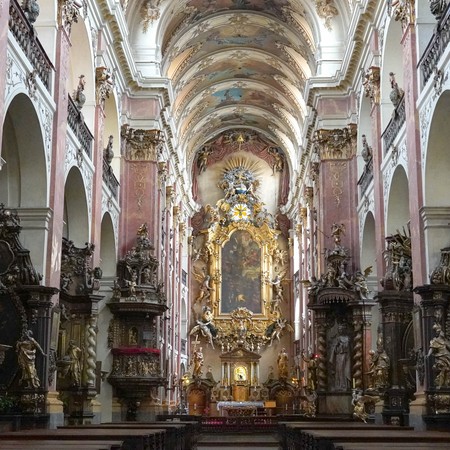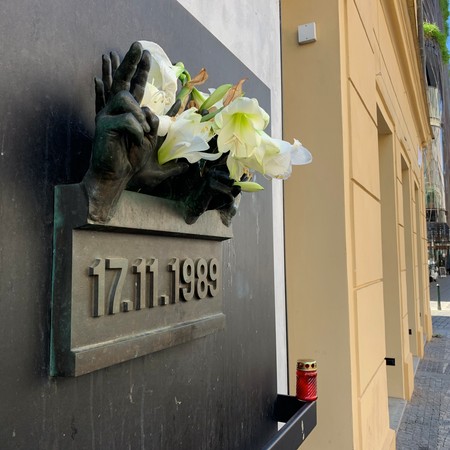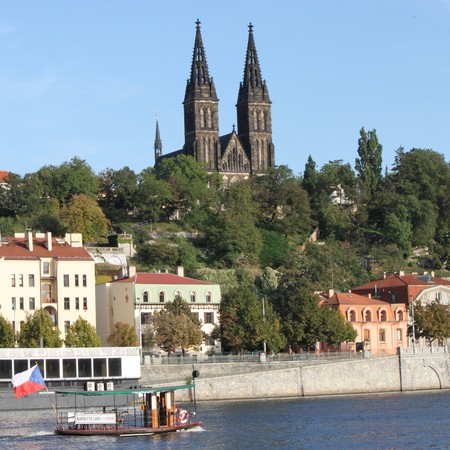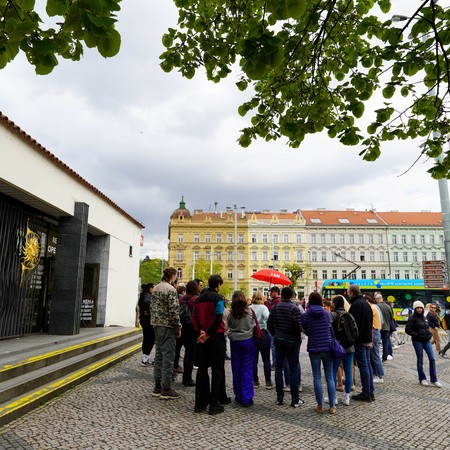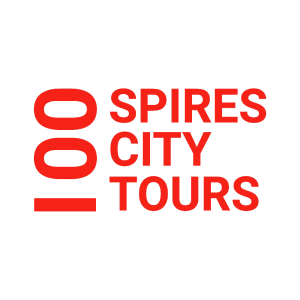Municipal House - History and Architecture
Municipal House Prague is one of the most stunning Art Nouveau buildings in the city. Finished in 1912, Municipal House is located on the Namesti Republiky (Republic Square) next to the Powder Tower. You can see a large fresco above the main entrance of the Municipal House that portrays Lady Prague sitting on the throne with the Czech capital in the background.
A Brief History of Prague Municipal House
In the Middle Ages, the area where the Municipal House is standing nowadays was occupied by a King's Court. It was first inhabited by the king Wenceslas IV, son of the famous Charles IV. For the next 100 years, the palace located on the border between the Old Town and the New Town was the main residence of Czech rulers. It is also where the Royal Way begins - a road that future Bohemian kings would take to the St. Vitus Cathedral to be crowned there.
The last king to live in the King's Court was Vladislav of Jagello, who preferred to retreat to the safety of the Prague Castle after the wave of social uprisings and defenestrations in 1483. Vladislav for sure did not plan to leave King's Court, since he already paid for the construction of the Powder Tower in the proximity of his royal residence. In 1490, Vladislav returned to Budapest, and in 1515 King's Court was closed.
Even the Habsburg dynasty, which inherited the Czech throne in 1526, was not interested in the building, and it was sold to private hands. Cardinal Ernst Harrach bought King's Court and opened a Seminary there, which worked up until the cancelation of the Jesuit order. The building was then used as military barracks until its poor condition did not leave another choice but to destroy it completely.
At the beginning of the 20th century, a competition between Prague architects was supposed to decide who will lead the construction of a new representative building at the site of the former royal residence. Even though the results of the contest were different, the architectural plan of Oswald Polivka and Antonin Bolsanek was accepted as the winner. The construction took 6 years (1905-1911) and a collective effort of many renowned artists, sculptors, and designers, such as Alfons Mucha, Ladislaw Saloun, Karel Spilar. Could all of these people now, what fame is awaiting the fruit of their hard work?
On January 6th, 1918, a so-called Three Kings Declaration was signed in the Municipal House. That declaration proclaimed the state sovereignty, and on October 28th same year, the Independence of the Czechoslovakian Republic was announced on the balcony of Municipal House. To this day, the square that the balcony overlooks is called Republic Square.
What is the architectural style of the Prague Municipal House?
- The Municipal House in Prague is a mix of Neobaroque and Art Nouveau styles. It was designed by Antonín Balšánek and Osvald Polívka in 1911.
Our Local Guide Tip
- Municipal House Cafe - a great place to go for breakfast and lunch and enjoy the atmosphere of bustling Prague New Town.
Smetana Hall Prague
- Smetana Hall is the biggest concert hall in Prague and Czech Republic named after a Czech composer Bedrich Smetana. It has a capacity of 1,259 seats. The price of a concert ticket is usually around 500czk per person.
American Bar and other Restaurants in Prague Municipal House
- Restaurants in the Municipal House such as the famous American Bar and the French restaurant have been closed since March 2020 due to COVID restrictions. Even though Prague restaurants were able to reopen in summer, Municipal House was not able to recover from months of lockdown and had to close most of their restaurants. We hope that they will be able to open again in the future! You can visit the Municipal House official website for any updates!
Looking for the best place to stay in Prague? Check out our Top Prague Hotel Picks for any season and budget! <- click here
See more of our Prague Travel Tips.
Author: Valeriia Zahradnikova and Vaclav Zahradnik, Prague guides certified by Prague City Tourism agency. Valeriia and Vaclav have worked in tourism for over 6 years and have guided thousands of Prague visitors.
